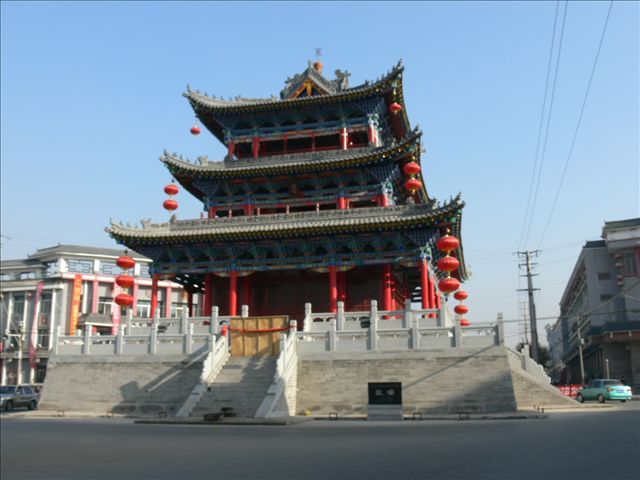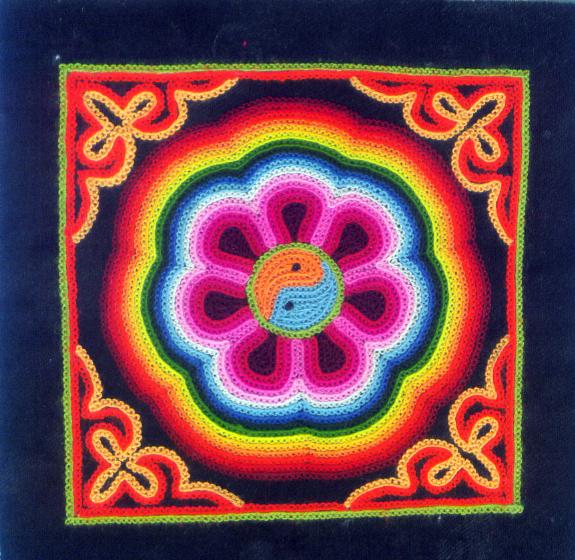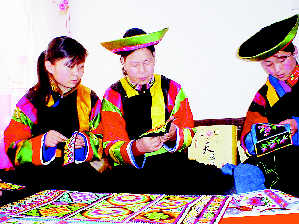Introduction |
|
|
The autonomous county of the Tu nationality Huzhu, located in the northeast of Chinese Qinghai province and situated at the intersection between the Tibetan Plateau and the Loess Plateau, in which there nurtured vital and majestic landscape such as ranges of lofty mountains are erect into the sky, winding rivers are spouting waters,and shapes of lakes are spreading all over. Besides, the distinctive geographical location helped to build a unique natural landscape here. In this none but the only autonomous Tu County, the Tu People have been born and bread here for generations since the ancient time, shaping a unique cultural landscape, and Embroidery art is one of the wonderful flowers in the garden of this ethnic culture. |
 |
The Tu embroidery work is fine and exquisite, each stitch and thread is steady and straight. The overall relationship of the embroidery is very important that the coiled embroidery is the main part with dense embroidery as keynote, and characterized a large area of complex embroidery. Each piece of embroidery comes out from that is gorgeous, graceful and dazzling; meanwhile, the durability of it is also boasted because of the time-consuming exquisite craftsmanship. The wide use of the Tu embroidery also spurs the active folk embroidery. Up till now, the Tu women keep dressing themselves with embroidery works from forehead to toe, attractive and fairies-like. |
 |
The Tu women are adept at embroidering, with their wisdom and deftness to beautify themselves as well as life. The girls aged seven or eight enlightened by their mothers and sisters, begin to study the basic embroidery skills such as stitching, threading and embroidering. After years of diligent practice, with the mastery of basic skills of folk embroidery, their embroidery works they make range widely from the simple tailor’s cushion, purse, collar, bibs and belts to the large-scale figures, landscapes, statues, etc. |
 |
Today the embroideries of the Tu nationality have been active in market and become tourist souvenirs of rich characteristics. |
|
| Dexterous hands |
||||||
| embroidering wonderful arts | ||||||
